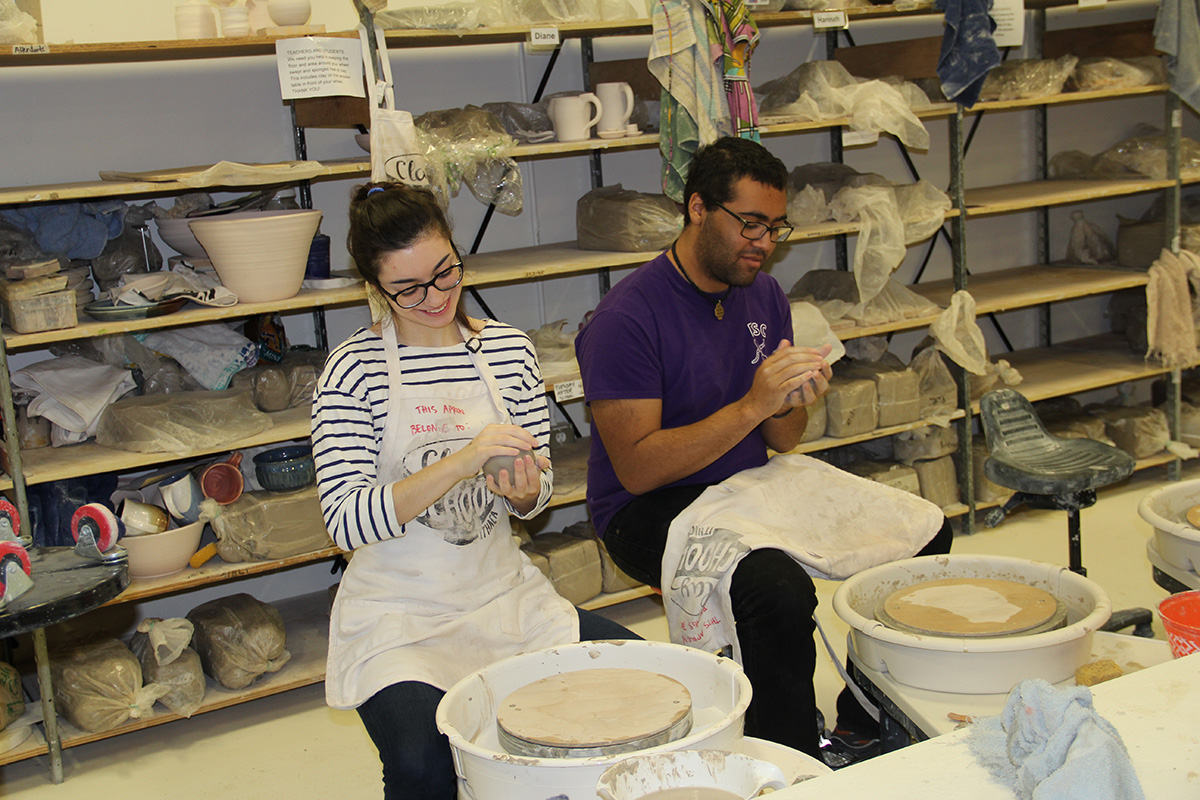Archaeology students try their hand at creating artifacts
By Anna Carmichael

Students in the Ceramic Analysis for Archaeology class spend most Friday mornings discussing matters of archaeological theory and method while poring over shards of ancient pottery. But on Feb. 26, the class headed to The Clay School in Ithaca to make some pottery of their own.
Lori Khatchadourian, assistant professor in the Department of Near Eastern Studies, said she wanted the students to work with clay to get a feel for the process of making pottery.
“It’s important for the students to realize that there were once human actors behind the worn and broken pots that archaeologists uncover,” Khatchadourian said. “Potters made choices.”
“For the past few weeks in class we have been studying how pottery is made, from the initial gathering of the raw material all the way to having a finished pot or ceramic object,” said Melissa Bravo ’16. “This field trip helped to put into perspective the challenges of making usable ceramic objects. Even with the modern conveniences that we had in the [Clay School], creating a functional object was quite difficult.”
The class is normally held in the Landscapes and Objects Laboratory in McGraw Hall, where students have the opportunity to handle ancient pottery while learning how archaeologists approach ceramic technology to understand ancient economies, social relations and identities.
“Since ceramics are some of the most abundant material remains found at sites of almost any time period and place, it really helps to know how to look at and interpret these artifacts,” Bravo said.
Khatchadourian said the purpose of the trip to the Clay School was for students to get a sense of the difficulty of the craft, and the tension between the agency of the potter and the powerful influence the clay itself exerts in the form-generating process.
Ned Fischer, a graduate student in the class, said, “Pottery is a full body art form that requires constant contact with the material, which is something you cannot experience in a classroom.”
“I was able to increase my understanding of why potters make the choices that they do,” said Zoe Zaneteas ’18.
Anna Carmichael '18 is a communications assistant for the College of Arts and Sciences.
Media Contact
Get Cornell news delivered right to your inbox.
Subscribe